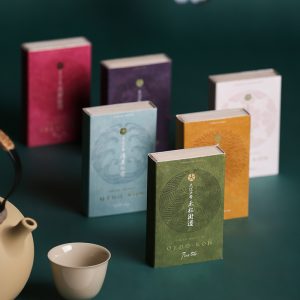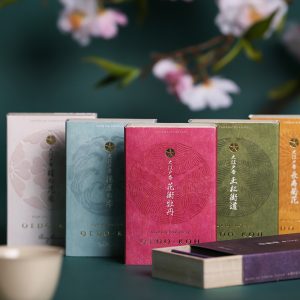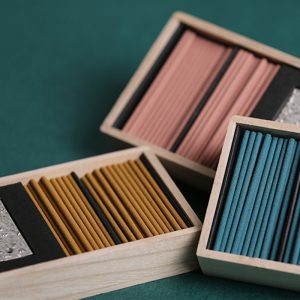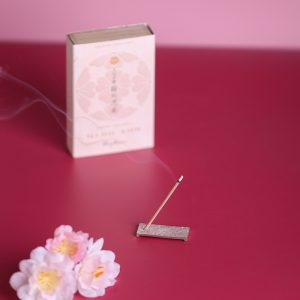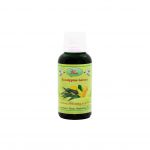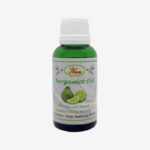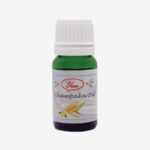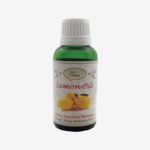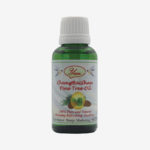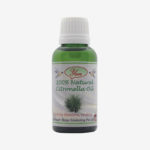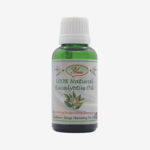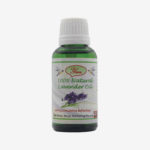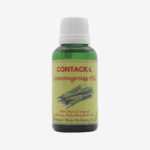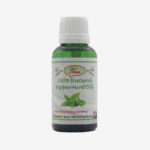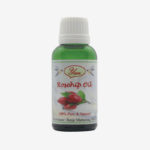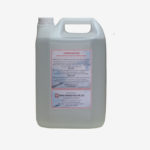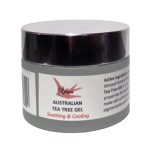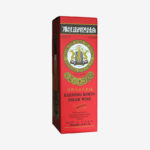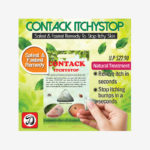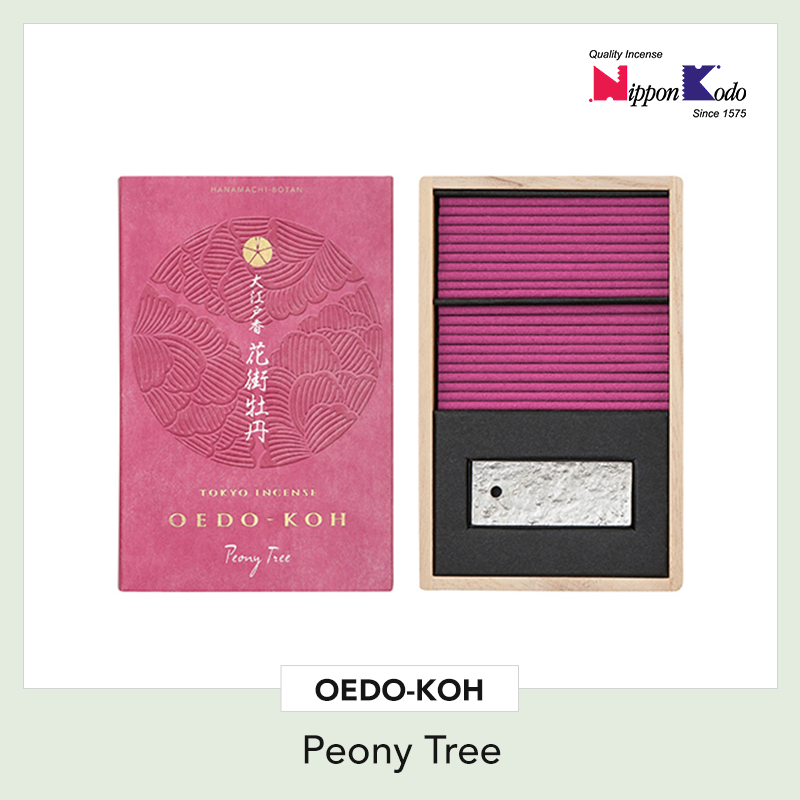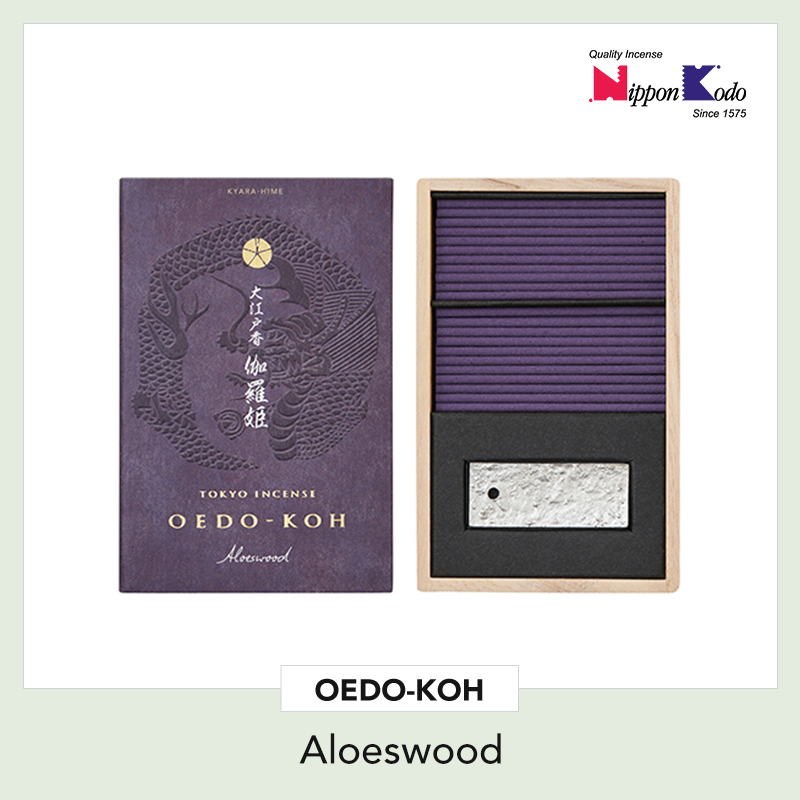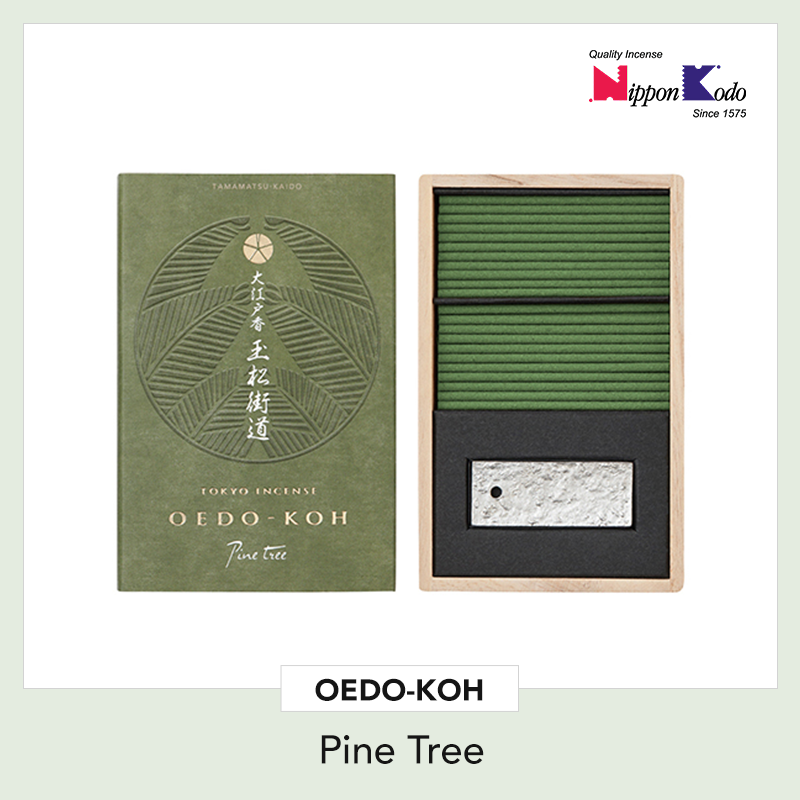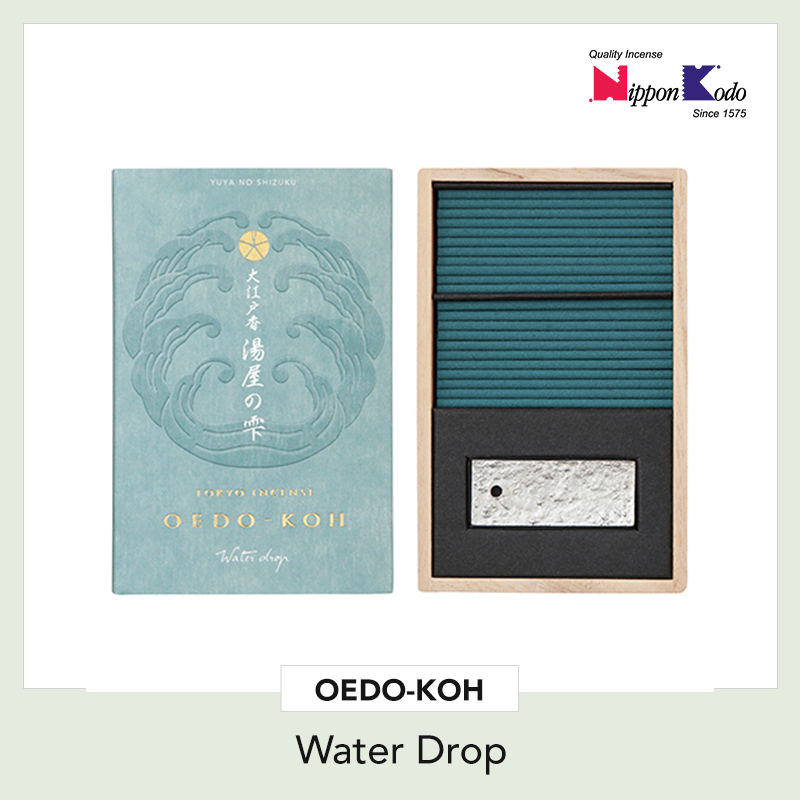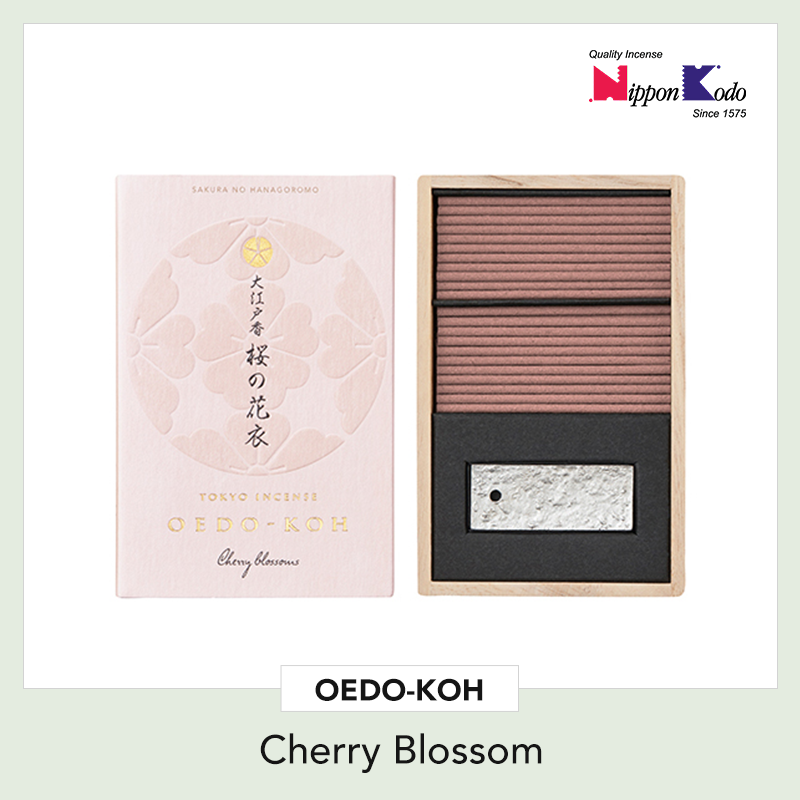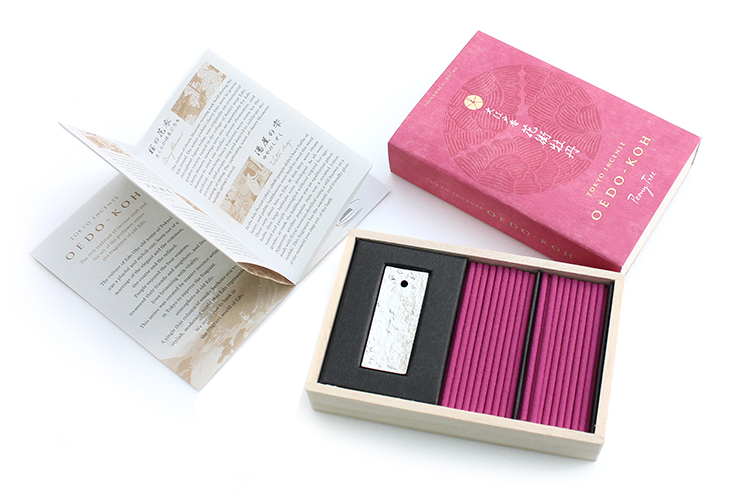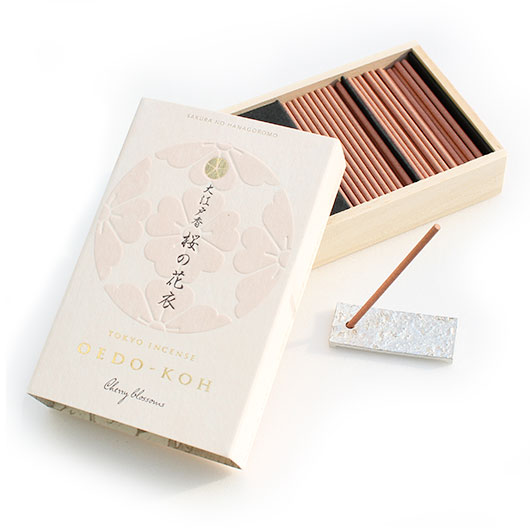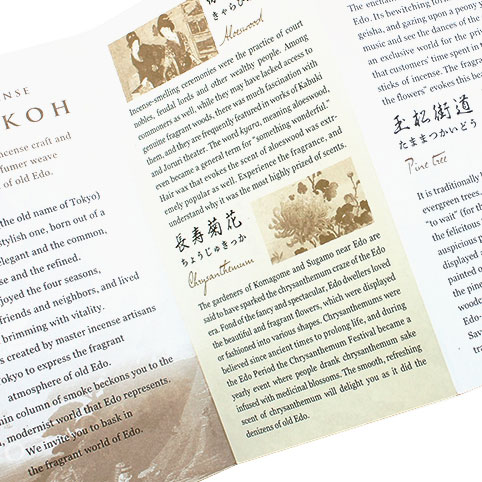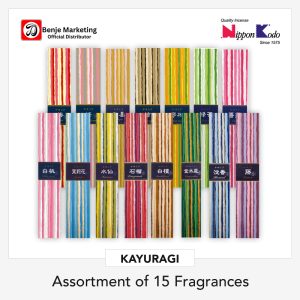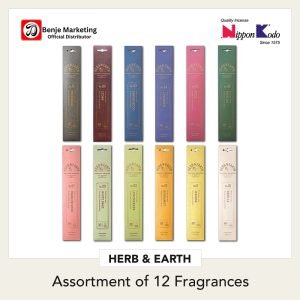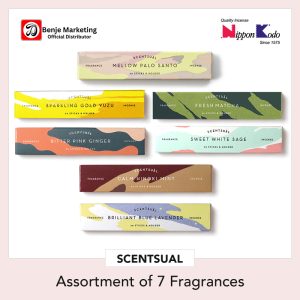Description
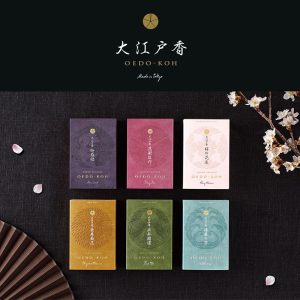
A series created by master artisans in Tokyo, inspired by the fragrant culture of old Edo (1600-1800). With many people bringing their own cultures to Edo, Oedo-Koh shares 6 different stories of the people during that time period.With 6 high quality fragrances to choose from: Aloeswood, Peony, Cherry Blossoms, Chrysanthemum, Pine Tree, and Water Drop.
Each box is specially packaged with paulownia wood with an incense holder, wrapped in a special Ukiyo-e painting, making this a perfect gift for any given situation.
The rich translation of incense craft and the art of the perfumer weave the fragrance of Old Edo.
– For refreshment, relaxation, reading, listening to music, yoga, bathing
– No bamboo core for a clean burning, pure scent
– Petite, cute package; take 2 to 3 as a gift!Specifications:
Stick Count: 60
Burning Time: Approx. 12 min
W x H x D (mm): 67 x 102 x 20
Tin was a favored metal by the upper class during the Edo period.
The tin incense stand included in the package can be washed with water and will last for a long time.
60 Sticks
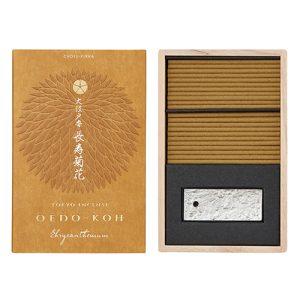
Key Note: Chrysanthemums
The gardeners of Komagome and Sugamo near Edo are said to have sparked the chrysanthemum craze of the Edo era.
Fond of the fancy and spectacular, Edo dwellers loved the beautiful and fragrant flowers, which were displayed or fashioned into various shapes.
Chrysanthemums were believed since ancient times to prolong life, and during the Edo Period the Chrysanthemum Festival became a yearly event where people chrysanthemum sake infused with medicinal blossoms. The smooth, refreshing scent of chrysanthemum will delight you as it did the denizens of old Edo.
___________________________________________________________________________
Oedo-Koh Cherry Blossoms
60 Sticks
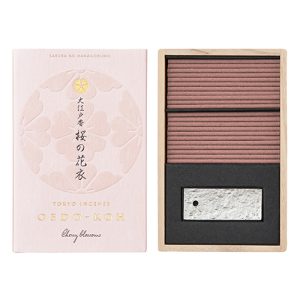
Key Note: Cherry Blossoms
Savor the joy of Spring time, when young and old alike feel the allure of the outdoors, with the sweet, gentle scent of cherry blossoms.
The custom of cherry blossom viewing took hold during the Edo Period.
The somei-yoshino cherry tree, seen in groves throughout Japan today, was originally an ornamental garden variety raised in the village of Somei near Edo.
Cherry blossom viewings were also an opportunity for Edo denizens to meet one another, present themselves, and perform: matching fancy kimonos were worn for the occasion, and people sang and danced to celebrate the coming of Spring. The captivating scent of cherry blossoms heralds Spring’s arrival.
___________________________________________________________________________
Oedo-Koh Water Drop
60 Sticks
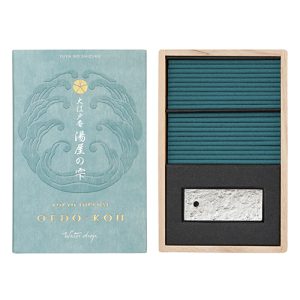
Key Note: Water Drop
The bustle of the bath house, where neighbors laugh and splash together. A warm and friendly fragrance for after bath time.
In the Edo Period (1603-1868) people did not have baths at home, therefore public bath houses were built to meet the need. At first they were steam baths, then large bathtubs were developed.
As people were unclothed and co-mingled without regard for age, gender, or rank, the bath house was an egalitarian place.
A popular item for these bath house-goers was a scented lotion made with distilled floral essences using a device called ranbiki.
OEDO-KOH Water Drop is a fragrance that has such floral warmth like the moment you step out of bath.
___________________________________________________________________________
Oedo-Koh Peony Tree
60 Sticks
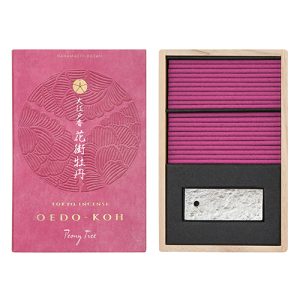
Key Note: Peony
Love potion of the geisha quarter, enchantment of the floating world. The sweet scent of peony has untold charms.
The enchanting peony enjoyed enormous popularity in Edo. Its bewitching form is reminiscent of a beautiful geisha, and gazing
upon a peony you can almost hear the music and see the dances of the geisha quarter. This was an exclusive world for the
privileged few, and its is said that customers’ time spent in tea houses was measured by sticks of incense.
The fragrance of the peony, “queen of the flowers” evokes this beautiful and evanescent world.
___________________________________________________________________________
Oedo-Koh Pine Tree
60 Sticks
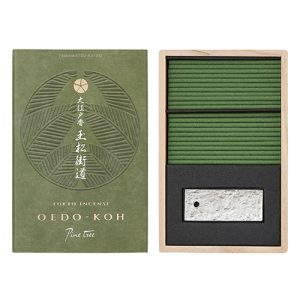
Key Note: Pine Tree
The brisk and refreshing aroma evokes reveries of old Edo, where pines lined the streets frequented by travelers, keeping watch and protecting them.
It is traditionally believed that the kami (deities) dwell in evergreen trees. The word matsu means both “pine” and “wait” (for the deity to descend), and the
pine is part of the felicitous trio of pine, bamboo, and plum tree, and the auspicious pairing of crane and pine.
Pine decorations are displayed at New Year’s and a monumental pine tree is painted on the backdrop of the Noh stage – all expressing the pine’s association with luck and longevity. In ukiyo-e woodcuts, boldy rendered pines standing in the midst of Edo-era people bustling to and fro are a classic motif.
___________________________________________________________________________
Oedo-Koh Aloeswood
60 Sticks

Key Note: Aloeswood
Savor the deep, rich fragrance of aloeswood, prized by the people of old Edo as the most luxurious of fragrances.
Incense-smelling ceremonies were the practice of court nobles, feudal lords and other wealthy people. Among commoners as well, while they may have lacked access to genuine fragrant woods, there was much fascination with them, and they are frequently featured in works of Kabuki and Joruri theater.
The word kyara, meaning aloeswood, even became a general term for “something wonderful”. Hair wax that evokes the scent of aloeswood was extremely popular as well. Experience the fragrance, and understand why it was the most highly prized of scents.
